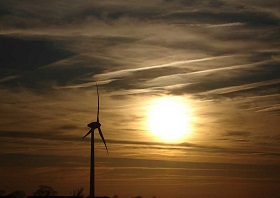Energy consumption in the construction industry
In very general terms, energy is a capacity to do work that can take a number of different forms, such as; thermal (heat), radiant (light), motion (kinetic), stored (potential), secondary (e.g. electricity), chemical, mechanical, and so on.
The term 'energy consumption' refers to the amount of energy that is used by a process, system, product, community and so on.
In the built environment, the term 'energy' is typically used in the context of generating heat, powering equipment, creating products and materials, transportation, and so on.
In a domestic context, energy consumption is often attributed to:
- Heating.
- Hot water.
- Cooling and refrigeration.
- Lighting.
- Washing and drying.
- Cooking.
- Other electric loads.
Sources of energy tend to be categorised as either renewable or non-renewable.
For more information see: Energy.
The total energy consumed by end users is typically referred to as ‘final energy consumption’. This is a measure of the energy that is used by the consumer and does not include that used by the sector itself in extraction, delivery, transformation, and so on.
Per capita energy consumption varies to a great extent between countries. At a rough estimate, wealthy developed countries consume 10-20 times as much energy per capita as poorer developing countries. However, energy consumption in many developing regions is rising rapidly.
The energy consumption of buildings, and the role of the construction industry to minimise it, has been a focus of government significant policy change and legislation such as; the Climate Change Act, Carbon Plan, Infrastructure Act, Building Regulations and Construction 2025. Several initiatives and devices, such as the use of smart meters and energy performance certificates, Green Deal, Energy Company Obligation, low-enery lightbulbs, door and window energy rating, and so on have been introduced in an attempt to reduce the energy consumption of buildings.
The energy consumed by a building throughout its whole life comprises:
- Initial embodied energy. The energy consumed to create the building, including; extraction, processing and manufacture, transportation and assembly.
- Recurring embodied energy. That is the energy consumed in refurbishing and maintaining the building during its life.
- Operational energy. The energy consumed in heating, cooling, lighting and powering appliances in the building.
- Demolition energy: The energy consumed in the disposal of the building.
For more information see: Embodied energy.
Energy efficiency not only allows individuals and organisations to reduce their capital and operational costs, is can also help lower fuel consumption and so reduce the emission of greenhouse gases and help prevent climate change.
For more information see: Energy efficiency.
NB The Home Quality Mark One, Technical Manual SD239, England, Scotland & Wales, published by BRE in 2018 defines energy demand as:
'The building energy provided for end uses in the building such as space heating, hot water, space cooling, lighting, fan power and pump power. Energy demands are the same as room loads. One of the outputs from the Building Regulations Output Document is for heating and cooling energy demand only, not for any other building energy uses. Heating and cooling energy demands are influenced by factors including building fabric heat loss, air permeability, glazing and shading.'
[edit] Related articles on Designing Buildings
- BEAMA.
- Carbon emissions.
- Conductor.
- Electricity supply.
- Energy.
- Energy harvesting.
- Energy storage.
- Energy targets.
- Plug load control.
- Power.
- Power generation.
- Renewable energy.
- Total final energy consumption.
- Types of fuel.
- Ubiquitous sensors to assess energy consumption and wellbeing in domestic environments.
Featured articles and news
RTPI leader to become new CIOB Chief Executive Officer
Dr Victoria Hills MRTPI, FICE to take over after Caroline Gumble’s departure.
Social and affordable housing, a long term plan for delivery
The “Delivering a Decade of Renewal for Social and Affordable Housing” strategy sets out future path.
A change to adoptive architecture
Effects of global weather warming on architectural detailing, material choice and human interaction.
The proposed publicly owned and backed subsidiary of Homes England, to facilitate new homes.
How big is the problem and what can we do to mitigate the effects?
Overheating guidance and tools for building designers
A number of cool guides to help with the heat.
The UK's Modern Industrial Strategy: A 10 year plan
Previous consultation criticism, current key elements and general support with some persisting reservations.
Building Safety Regulator reforms
New roles, new staff and a new fast track service pave the way for a single construction regulator.
Architectural Technologist CPDs and Communications
CIAT CPD… and how you can do it!
Cooling centres and cool spaces
Managing extreme heat in cities by directing the public to places for heat stress relief and water sources.
Winter gardens: A brief history and warm variations
Extending the season with glass in different forms and terms.
Restoring Great Yarmouth's Winter Gardens
Transforming one of the least sustainable constructions imaginable.
Construction Skills Mission Board launch sector drive
Newly formed government and industry collaboration set strategy for recruiting an additional 100,000 construction workers a year.
New Architects Code comes into effect in September 2025
ARB Architects Code of Conduct and Practice available with ongoing consultation regarding guidance.
Welsh Skills Body (Medr) launches ambitious plan
The new skills body brings together funding and regulation of tertiary education and research for the devolved nation.
Paul Gandy FCIOB announced as next CIOB President
Former Tilbury Douglas CEO takes helm.
UK Infrastructure: A 10 Year Strategy. In brief with reactions
With the National Infrastructure and Service Transformation Authority (NISTA).























